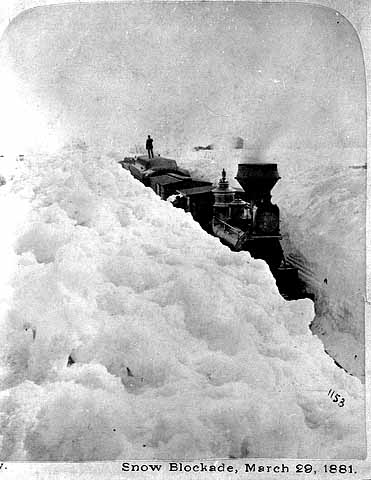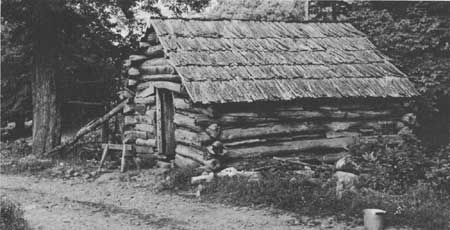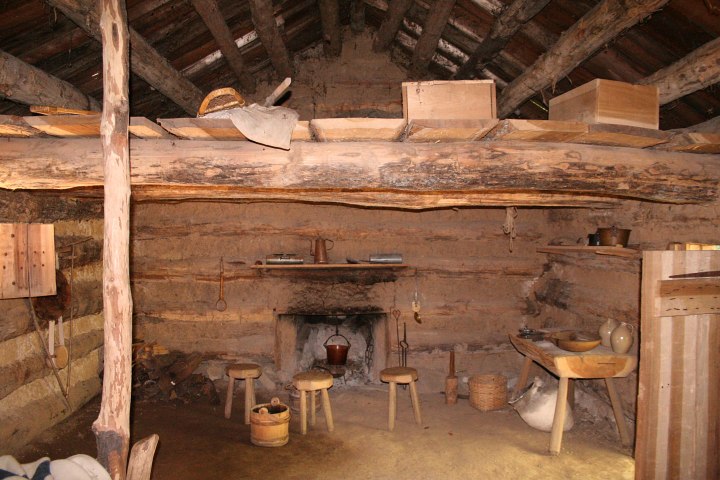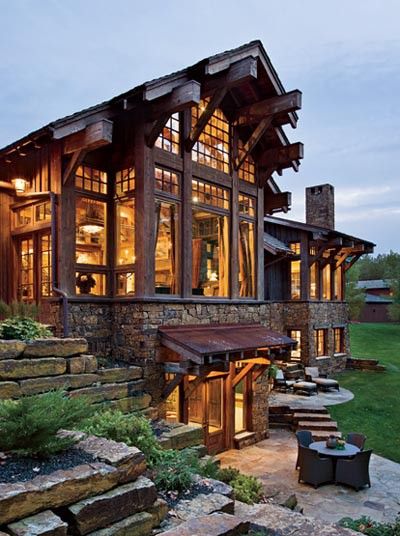This has been an exceptionally mild winter here in northern Illinois. It figures—after 6 winters with a long, rural commute, I finally work from home, and there have been no days with treacherous road conditions and only a handful with polar temperatures. Still, a mild Midwestern winter is a rare treat (or perhaps the beginning of the end of human life on this planet, but let’s not get ahead of ourselves). In a normal year, late February would be the prime part of the year for a condition known as “cabin fever.” There would be piles of hardened, filthy, gray snow on every curb, with bits of garbage and dead leaves frozen into them. Temperatures would be creeping from the single digits into the 20s by month’s end. It would still be too cold for many outdoor amusements, but if the sun was shining and it was anything above 20 degrees, you would be unperturbed taking the trash out or getting the mail in a t-shirt. In a typical winter, by late February, you would be grumpy, edgy, and your desktop screen saver would be a beach theme. Hysteria would be looming.
Even in my worst bout of cabin fever, I have about 1,200 square feet of space broken into several rooms, two of which have indoor flush toilets, and an attached garage with a car in it. With the flip of a switch, light and heat are safely delivered at my whim. Our heat source doesn’t generate smoke, the ventilation is good, and I share the space with one other adult, one small child, and one Ragdoll cat. If things get too bad, I can get in my heated car, and go to a store, the public library, or a coffee shop, all with heat and light, and other people, within a few minutes’ drive. But this was not always the case.
I asked the oracle Wikipedia for an origin of the term, which I didn’t find, but the definition it offered was too good not to share. Paraphrased, it describes the “extreme irritability and restlessness a person may feel” when “stuck indoors in confined quarters for an extended period.” A person experiencing cabin fever, it says, may “have a distrust of anyone they are with or . . . an urge to go outside even in the rain, snow, dark or hail.” The list of instances in pop culture includes The Shining! I always thought there was something a little more serious going on in that story, but the level of psychosis is probably not far off. For a real-life example, just think of the Donner party.
In the homesteading days of the mid-19th century, a serious malady known as “prairie madness” sprang up. This was an acute depression brought on by the isolation of life on the new frontier. The Homestead Act of 1862 offered 160 acres of land to anyone—women, immigrants, and freed slaves included—who could occupy and farm the land for a period of five years. This led to a mass migration from the settled eastern part of the country to the western frontier. The homesteaders, many of whom were accustomed to creature comforts and social interaction “back east,” experienced a sense of shock at the harsh living conditions and seclusion of their new lives. This caused depression in some of the people, and the common manifestations were emotional upheaval, occasional violence, and social withdrawal (not a challenge when you were miles from the nearest neighbor with harsh weather and sketchy transportation options). Diarists, historians, and fiction writers of the time mentioned prairie madness, and the ones that immediately jumped to my mind were Laura Ingalls Wilder’s books, some of my beloved childhood favorites.
The last three or four books of the series, which is fictionalized autobiography, describe the homestead life around the budding town of De Smet, South Dakota in the 1880s. Wilder’s father, Charles Ingalls, had come to De Smet from Minnesota with his wife and four daughters, seeking to file on a homestead. Wilder’s teenage years, early teaching career, courtship, and marriage to a young homesteader named Almanzo Wilder, take place in and around De Smet. There are many tales of prairie life, and a little prairie madness (fans may remember Mrs. Brewster threatening her husband at knifepoint if he didn’t take her back east in These Happy Golden Years). The rawest of these descriptions are featured in The Long Winter, which describes the 1880-1881 winter, one with historical snowfalls and low temperatures. Unlike most of their neighbors, who had come to De Smet that summer with ample provisions from the east, the Ingalls family had been in the region for a year, and had only the meager supplies they had gathered from the first year farming their homestead claim. The family spent the winter in a rental building the father had constructed in town. Trains stopped running in December and coal, kerosene, and food supplies dried up as blizzard after blizzard battered the town. By January, the Ingalls family were living in the back room, huddled around their kitchen stove, furiously twisting hay into sticks to fuel their fire, and continuously hand-grinding wheat kernels in their coffee grinder to create a flour they made into a crude brown bread, which was all they ate for weeks. The town did not welcome a supply train until May, 1881.

With descriptions of such living conditions, it is not hard to see that life was tedious, indeed. Being trapped in one or two rooms with one’s family for extended periods of time with poor heat and light, the monotony of stored provisions, and weather that was downright scary, would make anyone tense. Whether the hovel you inhabited was made of sod (a common building material on the plains where trees were scarce), or logs—luxurious by comparison to the sod houses, the floors, walls, and ceilings of which were dirt, complete with critters and leaks—it was often a temporary shelter of quick construction while plans for a more permanent house were made. After the family moved into roomier quarters, the log structure could serve as a barn or storage shed. Despite the loathing their inhabitants often came to feel for them over time, these “cabins” have become a beloved icon in American culture.

The practice of building a shelter out of logs originated in Scandinavia, where tall, straight trees are abundant, and the weather is intemperate. Scandinavian immigrants to North America settled predominantly in what are now the Midwestern states, where similarly harsh weather, especially in winter, necessitated warm, solid homes. The typical cabin was one room, about 10’x20’ with a large hearth or stove for heat and cooking. Extra space for sleeping could be added with a loft above the main room, but this would still be shared by the entire family, and maybe some extended family. Privacy was at a minimum, to say the least. The exterior of the structure was built of long logs with notched ends, stacked together to make slatted walls, the gaps of which were then “chinked” with small sticks or wood chips packed with mud or clay to make them airtight.
Airtightness can be both a blessing and a curse. It keeps out the cold, but it keeps in a fair amount of smoke from the fire or stove, exhaust from kerosene lamps, germs, and smells—you better believe these families were using a chamber pot in the middle of the night when it was -40° F. If you were pregnant when you moved into a log cabin, that decidedly unsterile environment was where you would be giving birth, with the whole family present. If you were lucky, an experienced female relative might be on hand to assist. If not, your husband—most likely not an M.D.—would be doing a lot more than holding your hand during the delivery.

Site selection was important for a log cabin with equal consideration being given to proper drainage and good lighting. Windows had glass, when available, but they did not open, so opening the door was a good way to get light and air into the house in good weather. Most cabins were built upon a stone foundation, which would serve as the floor, covered with gravel or dirt that had to be raked daily. Flat boards to construct an even floor were hard to come by. The fireplace would be made of stone stacked up to a certain level, often finished with a chimney of sticks and mud, which could catch fire and take down the entire wooden structure. Fire was a necessity for heat and cooking, and one was almost constantly burning in winter to heat the uninsulated cabin, which would be frigid when the family awakened after neglecting the fire during the night. Before any breakfast (or coffee!) could be made, the fire had to be rebuilt. Children might have a homemade doll or hand-carved toy to play with, but anyone who has spent much time with a toddler knows such amusements would not hold the attention for long. While adults tend to conform to social customs of keeping dissatisfaction at bay, small children are usually more forthright with their opinions when they are unhappy. A winter trapped in a tiny cabin with several young children would be enough to drive all parties back east, if they weren’t driven insane first.
Despite the harsh conditions of real life in a log cabin, American society has held onto an idealized notion of these humble roots. Abraham Lincoln’s log cabin upbringing was glorified in a public relations gimmick that revealed the crude structures in which he spent his impoverished youth. Lincoln himself was mortified by his childhood circumstances, built a successful career, married up, and did his best to forget this part of his life, but still it clung. The first school I attended was Lincoln Elementary, and we were known as “The Railsplitters,” not “The Abolitionists,” “The Presidents” or “The Lawyers.”

The romantic connection people maintain to our pioneer ancestors has not waned in the nearly 200 years since this was an unavoidable way of life. Today, it is very popular to be married in a barn, modernized and adapted to the purpose, “Pioneer Woman” is one of the most popular cooks on The Food Network, and people are still building log homes, though they are less rudimentary than they once were.

As eager as we always are for spring to come again, our claustrophobia, dry skin, and general malaise at this time of year is nothing compared to what our ancestors survived in order to civilize the once-wild forests and prairies many of us now call home.
Sources and Further Reading:
https://en.wikipedia.org/wiki/Cabin_fever
https://en.wikipedia.org/wiki/Prairie_madness
http://www.pbs.org/wnet/frontierhouse/frontierlife/essay4.html
https://en.wikipedia.org/wiki/Log_cabin
http://www.nytimes.com/1998/02/08/travel/lincoln-s-early-years.html
Yikes that puts things in perspective!!! Well done Sarah great writing.
LikeLike
We have it made, I say sitting next to my toasty gas fireplace, (turn knob, fireplace is roaring!). About 42 degrees and drizzle damp out right now. The post is excellent. Wilder’s “The Long Winter” was so depressing I never read another in the series, and it was the description of the never ending cold, and the scarcity of fuel to burn, that was gruesome. It reminded me of Little Norway up by Mt. Horeb, Wisconsin, which had a sod hut built into the hillside where a family of 3 or 4 spent the excruciating winter in a house the size of a modern bedroom. No windows, but at least they didn’t have to watch the Packers on TV! Sadly, Little Norway closed in 2012, but it was a fascinating if grim reminder of survival before modern convenience and plenty. American’s romanticism with log cabins, and “setting out for the territory” has not gone away, but it probably must wane as we become more and more a nation of cities, and owning acres and guns and livestock is now for most people something you see on TV, or in a living museum. My dad had to cut firewood to burn for heat, to stock up for winter, growing up on a farm in South Dakota. By the time I came along, one generation later in the late 50s, we simply turned the thermostat up a few degrees when chilly. When I was growing up the furnace burned fuel oil, from a large tank in the basement, then later we converted it to natural gas from a buried pipeline, so the gas tank never needs refilling. We have the technology!
LikeLike